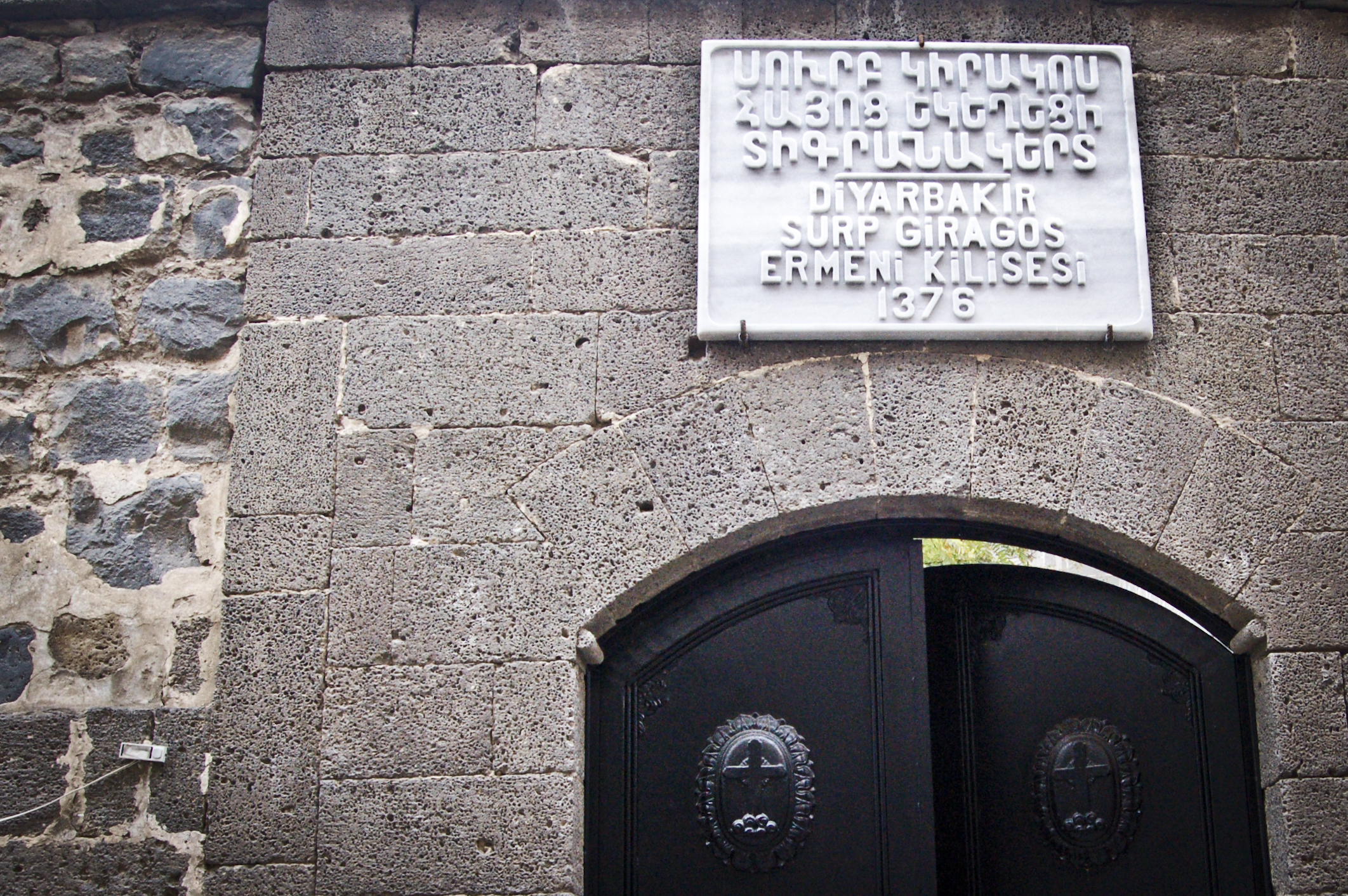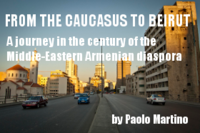
Diyarbakyr (photo Paolo Martino)
1915: in the countryside around Diyarbakyr, Armenians and Kurds have been living together for centuries. The Ottoman empire, on the verge of collapse, is about to launch its witch-hunt. Ethnic cleansing in Anatolia is systematic. But some men, helped by luck or their neighbors, manage to save themselves. The ninth episode of our report, “From the Caucasus to Beirut”
“My Grand-Mother died when I was 18 years-old. A few days later, my mourning Grand-Father gathered the whole family at home. His eyes were swollen, but he looked serene. ‘I have called you here to tell you something’. We all thought it was about our Grand-Mother’s last will, or something like that. ‘For too many years I have kept a secret with me, but now I no longer have a reason to”. No one could have ever imagined that Grandpa had been carrying a burden for 70 years. ‘You are not what you think you are. I have made up your past’. That burden was falling heavily on the whole family. ‘We are Armenians’”.
Darkness captures Diyarbakyr arrogantly, as if the day were only reduced to a timid interval between two nights. On the fifth floor of a glass building, in the largest Kurdish city in Turkey, Vedat, an accountant, is pouring tea in small glasses on his office desk. Outside, the neon and car lights have taken over a dull sky. “Since the day my Grand-Father revealed our origins, my life has been a continuous discovery. Sometimes I think I was actually born that day”. Vedat’s story starts from afar. It starts a century ago, from the moment a 10-year-old boy, thin enough to squeeze into a crack in the wall, bid his last farewell to his family before disappearing forever in the prairie. And the long Diyarbakyr night, just begun, now becomes the stage on which the story of an incredible human adventure is handed on.
Baba Tahir, 10th Century Kurdish poetIf I told my suffering to the mountains,
The flowers would no longer grow on the slopes
“The soldiers entered the village at dawn, but found no one in the Armenians’ houses. The echo of the roundup had already gotten there”. Nineteen-fifteen: in the country side around Diyarbakyr, Armenians and Kurds have been living together for centuries in the myriad of villages on the plateau. Shepherds and farmers, Muslims and Christians, symbiosis and synthesis of an ancient land. The witch-hunt launched by an Ottoman empire on the verge of implosion is widespread. The Armenian population, accused of being the fifth pillar of the European powers who are banqueting with the remains of the Sublime Porte, has no way out. Ethnic cleansing in Anatolia is systematic but, in this collective tragedy, some men are able to save themselves, helped by luck or their neighbors.
“My Grandpa managed to go into a barn, after running aimlessly during the whole night. He was on his own, he was the only one who got out of the cave where the Armenians in his village tried to hide. The soldiers looking for him went on for hours poking their swords through the straw, but he remained curled up and silent. The farmer who had protected him, an old Kurdish landowner, became his new Father”.
Vedat speaks with a fast pace and then makes long pauses. He tells his story with the calm guarded only by ancient peoples. The story is slowly shaped by his words and gestures. “I spent as much time as I could with my Grandpa to relive the tragic moments of his experience. His life as a young boy, up till then a secret, became my biggest interest”.
Upon turning ten, Vedat’s Grand-Father was forced to give up his identity. He forgot his name and his habits, he learned to love a new life. When he was twenty, he settled down and started a family. A Kurdish family. When she married him, his wife only set one condition to their love: his past, which she was aware of, was not to be brought back to life as long as they lived.
“In the meantime, though, Turkey has changed. Today, I can be proud of being Armenian. Turkish and Armenian. And, in breaking his word to my Grand-Mother, my Grand-Father gave us our most precious gift back: the past”. Vedat has visited his home-village many times, his children are learning Armenian, on his desk he has history books on the genocide and the Armenian past of his Country. Before leaving the office, late at night, he takes out a bottle of liquor, with a smile on his face. “Please, take it. It is a gift from some Armenian friends. I kept it out of good manners, but I told them that Muslims don’t drink!”
The walls of Diyarbakyr, thick and powerful, surround a labyrinth of streets and alleys. Marble slabs laid down centuries ago are now floors to a sprawling city, where an industrious humankind can be found on every corner. Pedicabs and bikes brush against the counters of the bazaars, while passersby linger around the workshops to measure the rhythmical gestures of the blacksmiths and to enjoy the warmth emanating from hot iron. A closed gate is surmounted by an inscription. “Armenian church of Saint Gregory. 1376”. The inscription on the gravestone is also in Armenian. A young custodian opens the door, and the beauty unraveling before me is breathtaking. A spacious courtyard is towered over by a stately church surrounded by porticoes. Attention is paid to each smallest detail, each element is in its place. Altar, chandeliers, carpets, shrine, crucifix. I sit on a bench, I drink the tea that the custodian rushed to prepare for me.
“At the beginning of the 20th Century, the Armenian population in Diyarbakyr was 35.000. In 1927, the number had come down to 3.000 and the church went to ruin”. Some panels tell the story of how Saint Gregory first became a soldiers barracks and then a warehouse, to then sink into oblivion. “Armenians lived with Turks, Kurds, Syriacs, Chaldeans, Greeks, Jews, Nestorians, Yazidi”. A picture taken from up above a tower in 1904 shows minarets and bell towers, one next to the other, indenting the outline of the city. Today, only the minarets remain. “The restoration and reopening of the church have given back to the city an essential element of its heritage. The project is cared for by the municipality of Diyarbakyr”.
From my journal. November 18
“Here in Diyarbakyr, capital of Turkish Kurdistan, the sympathy for the Armenian issue is not an end to itself. A century ago, Armenians were wiped out, today the Kurds are in trouble. On the same land”. Vedat’s words are borne out of this sanctuary of silence. An Armenian church in Turkey, restored and re-consecrated, immediately takes on the value of a symbol of opposition to the government, to Ankara’s centralizing politics. In the backstreets, in the swarming alleys of this old town center, I breathe the same tense air of the Palestinian refugee camps in Lebanon, I feel the same vigil looks of the Beirut quarter sentinels vibrate. Colossal, incessant, clandestine, the writing PKK - the Kurdistan Workers’ Party - reminds passersby that the conflict is nursed in every corner of this labyrinth.
A bus departs from the center and crosses the street labyrinth up to the edge of the city. Rows of wretched buildings, monsters of concrete, mark the sub-proletarian suburbs of a city that in just a few years has seen its population grow ten times higher. Approximately one million refugees have come here to flee the retaliations of the Turkish army which, in 30 years of conflict with the Kurdish separatist front, has burnt hundreds of villages. A boy coming out of school looks out the window at tens of other children playing in the dreary courtyards of mud and concrete lit by a pale sun, anxious to go play with them. At the stop, he rushes to the door, already open, but he stops before getting off. He swiftly unties his shoes and gives the driver a bright smile before finally running barefoot to play with his friends.








